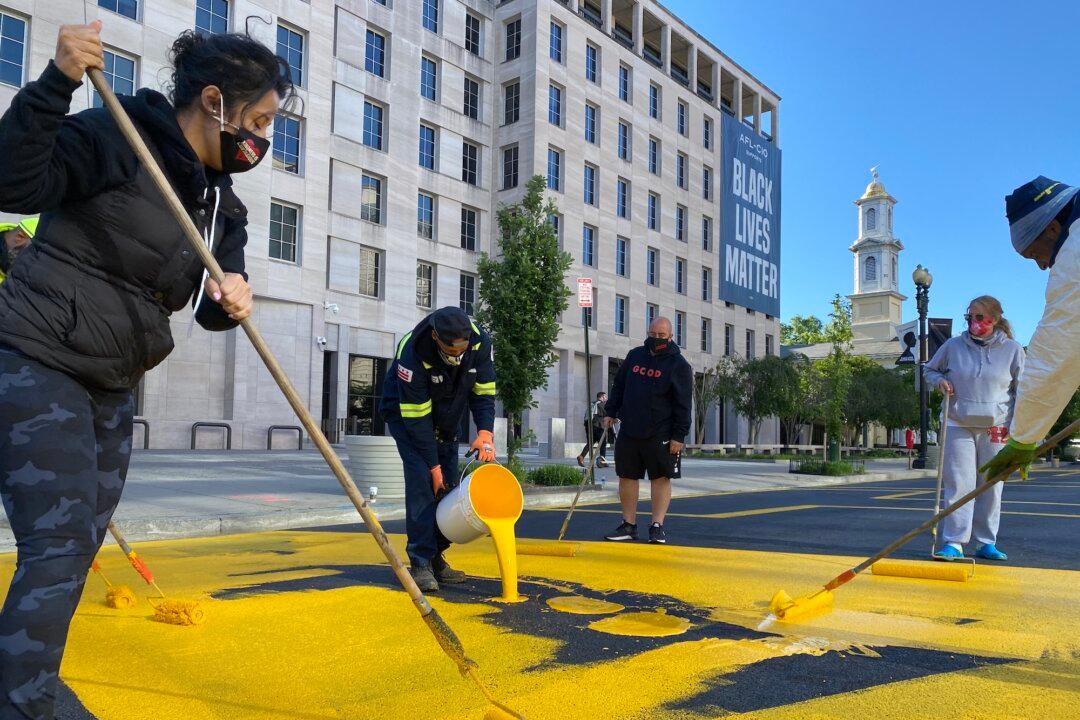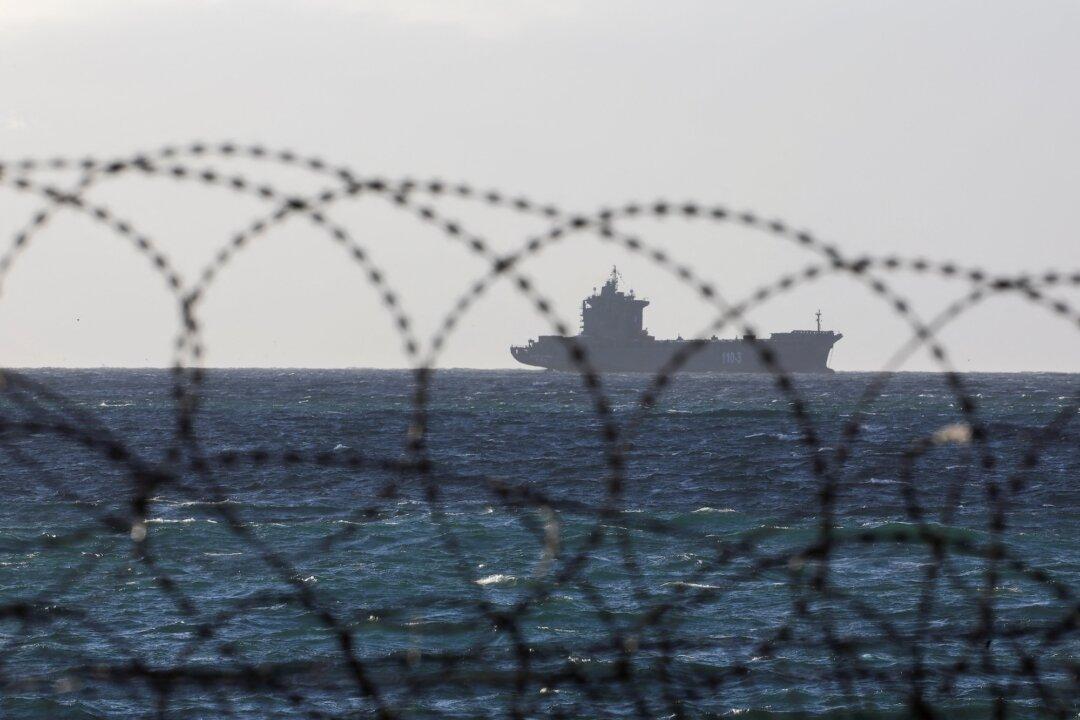Officials in the District of Columbia spent more than $270,000 in taxpayer dollars on a project to repaint the 50-foot-tall “Black Lives Matter” slogan on a street near the White House, records obtained by the nonprofit Judicial Watch show.
The 25 pages of records obtained via a Freedom of Information Act request filed by Judicial Watch show that the total price tag for the job of repainting the yellow phrase and the D.C. crest came in at $271,231. Paint and supplies accounted for $53,551, while labor totaled $217,680.





